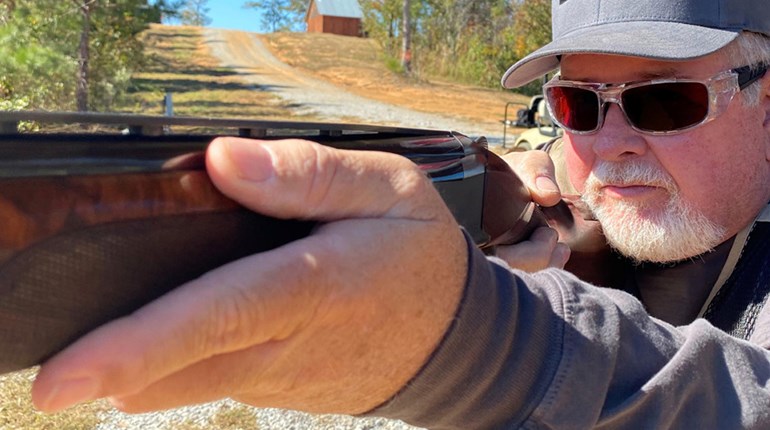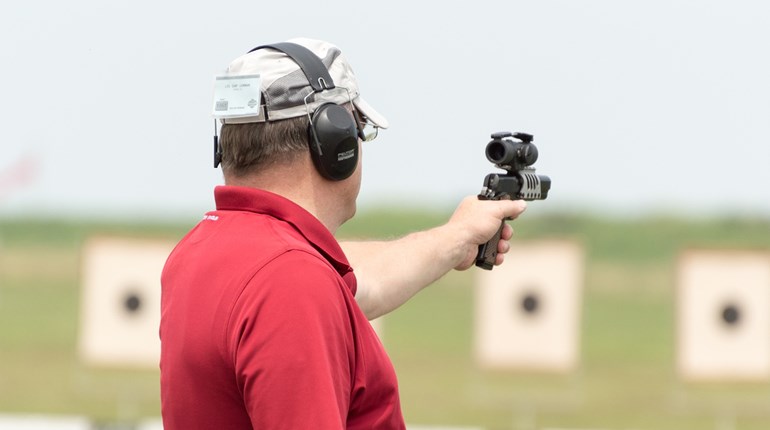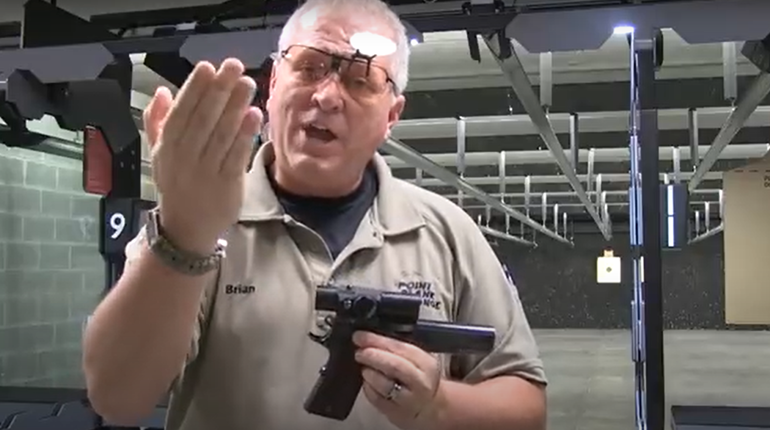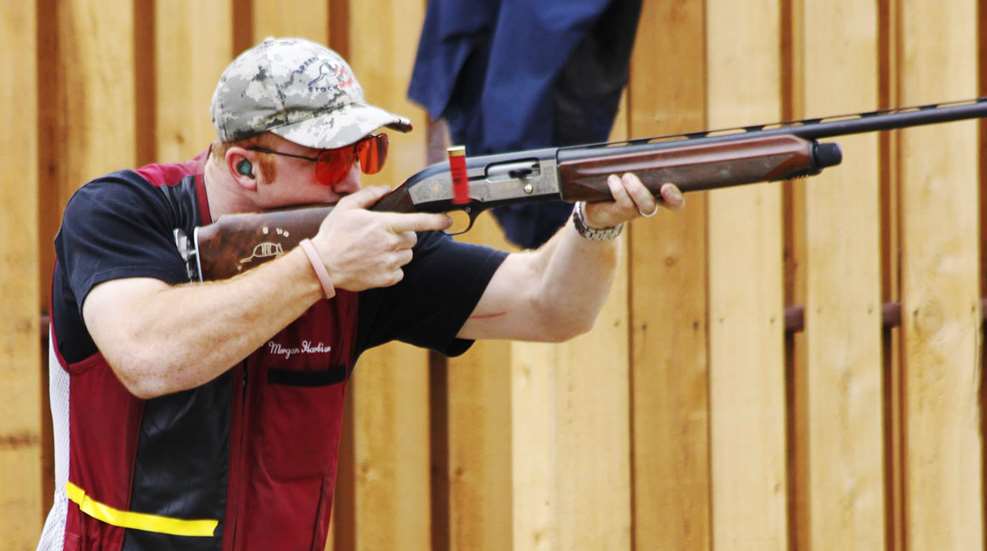
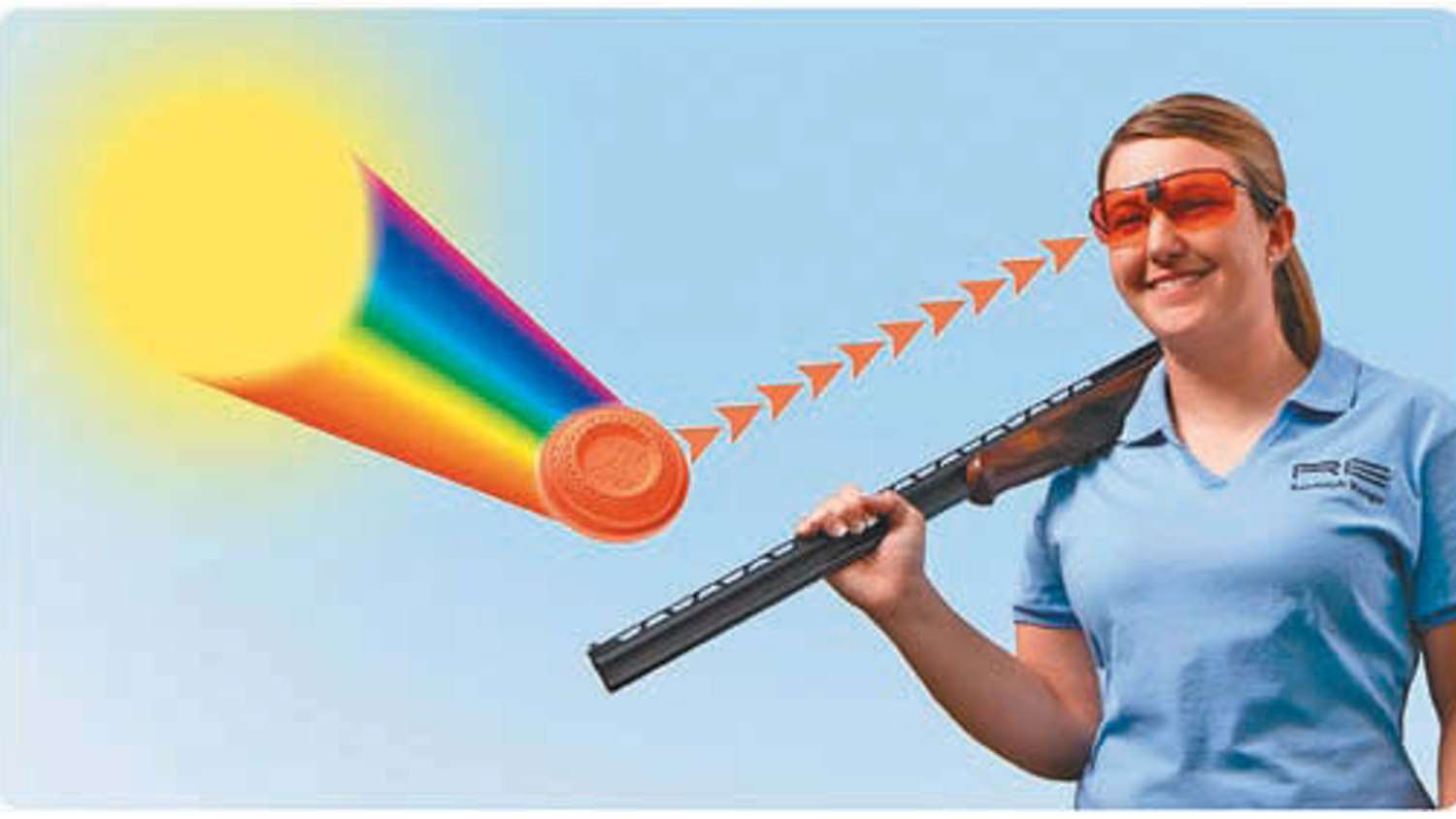
When an object reflects all of these wavelengths equally, it appears white. Objects that absorb all visible wavelengths equally, appear black. When an object absorbs the wavelengths in some bands and reflects others, it will have what we typically think of as a specific “color”—the reflected light. So, when daylight hits the surface of an orange clay target, the longer wavelengths in the orange-red part of the spectrum are reflected, while the rest of the wavelengths are nearly totally absorbed, resulting in what we see as an orange target.
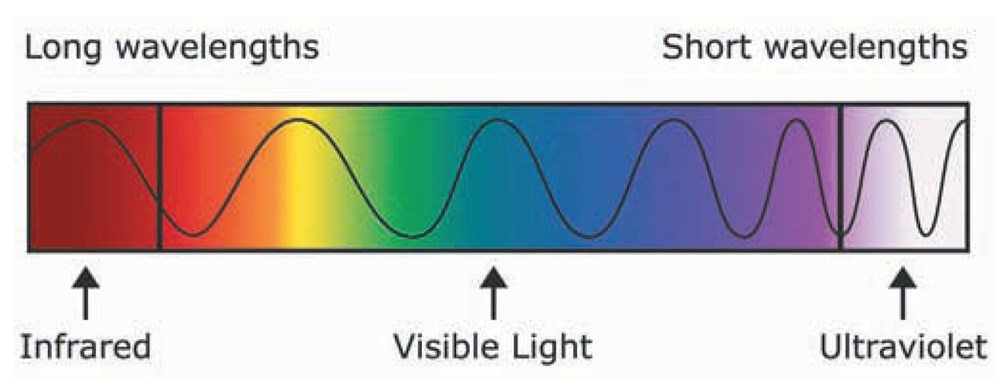
Tinted lenses can filter out parts of the light spectrum we don’t want to see, and in turn, enhance others. Most eyewear on the market blocks the ultraviolet (UV) portion of the spectrum, whether or not the lens is tinted. While UV light is invisible to humans, its short wavelength can cause eye damage. Infrared waves are also invisible, and are on the opposite end of the spectrum. While not typically dangerous, portions of the infrared spectrum are felt as heat, which can contribute to eye fatigue.
A tinted lens controls which visible wavelengths are absorbed (blocked) and which ones are transmitted to your eyes. For instance, an orange lens absorbs most of the light waves outside of the orange color band before they reach your eyes. This blocks all other colors in the visible spectrum, which essentially enhances orange. This is great for transmitting the light reflected by an orange clay target, but it also gives an orange tint to many other objects, which can lead to an undesirable decrease in contrast between the clay target and varying background colors such as green trees or blue sky.
One lens on the market that makes objects appear more orange, while simultaneously keeping other colors neutral, is the ColorMag lens by Randolph Engineering. This lens uses precise spectral filtering and wavelength shifting to accentuate and pass a greater portion of the orange-red spectrum, while transmitting the precise proportions of greens and blues required to maintain color fidelity. As a result, the other colors will appear darker, but true to their original hues. The wearer sees more vibrancy in the orange clay’s color and increased contrast between it and the background.
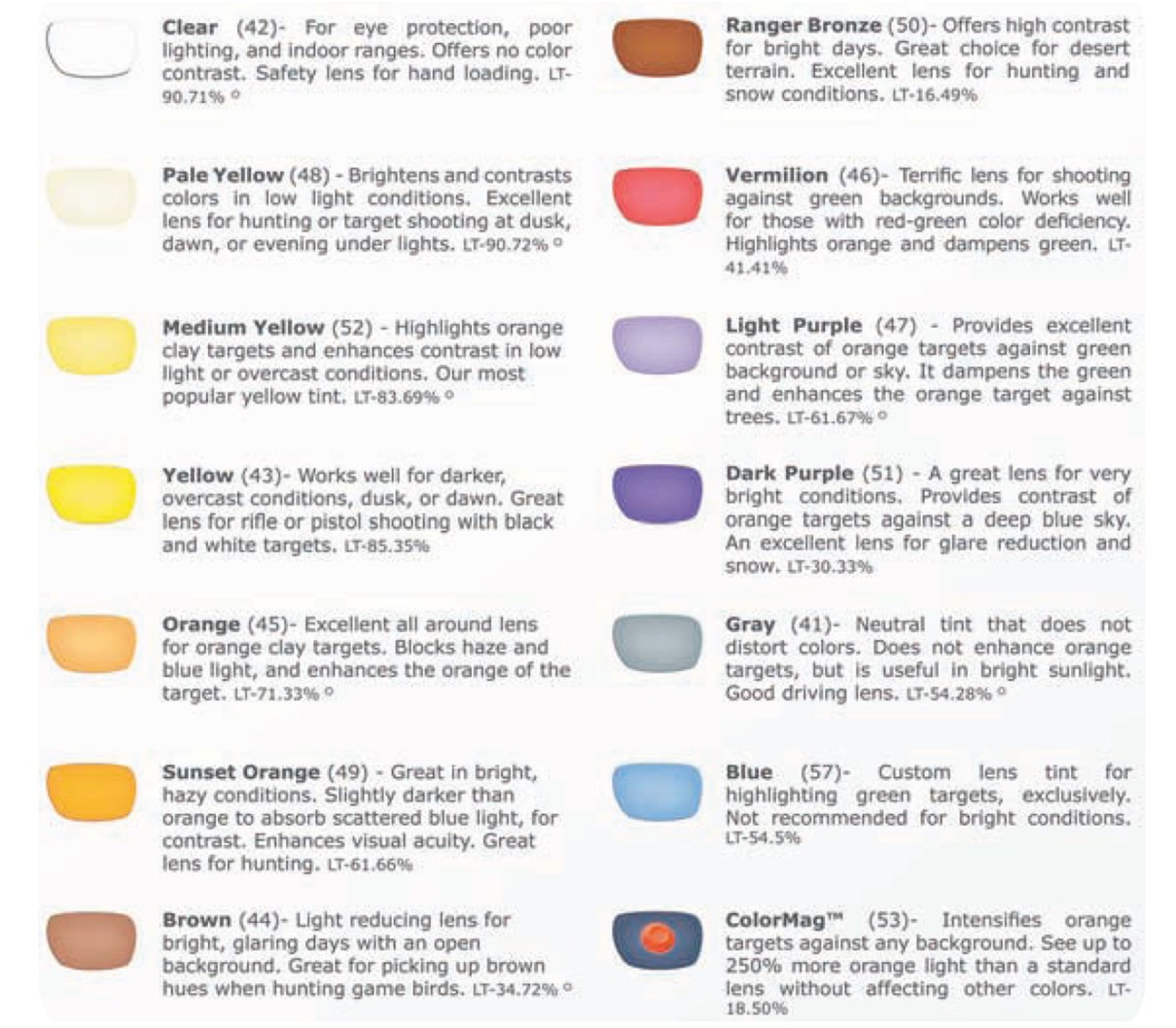
This is not to say other tints aren’t effective for target shooting: They are, but in different ways. For instance, lenses that absorb blue light are often effective for increasing contrast. Blue light’s shorter wavelength causes it to scatter more than longer wavelengths, which is why the sky looks blue. This can become a problem when you introduce dust, fog, haze or other environmental factors into the picture, and is known as blue blur. Your vision will lack contrast, and objects will appear to be less defined. Brown, amber, yellow and reddish lenses all absorb blue light and can increase contrast for outdoor targets. When you hear the term “high definition lenses,” this is what they’re referring to.
Each lens tint in the shooting sports market was designed to make your target stand out by letting in only the colors you want to reach your eyes. Refer to the lens tint guide (pictured above) to discover what each lens color is designed to do. Whether it’s a clay pigeon or an indoor paper target, you can find a lens tint that will trick your eyes into seeing it faster and more clearly.














